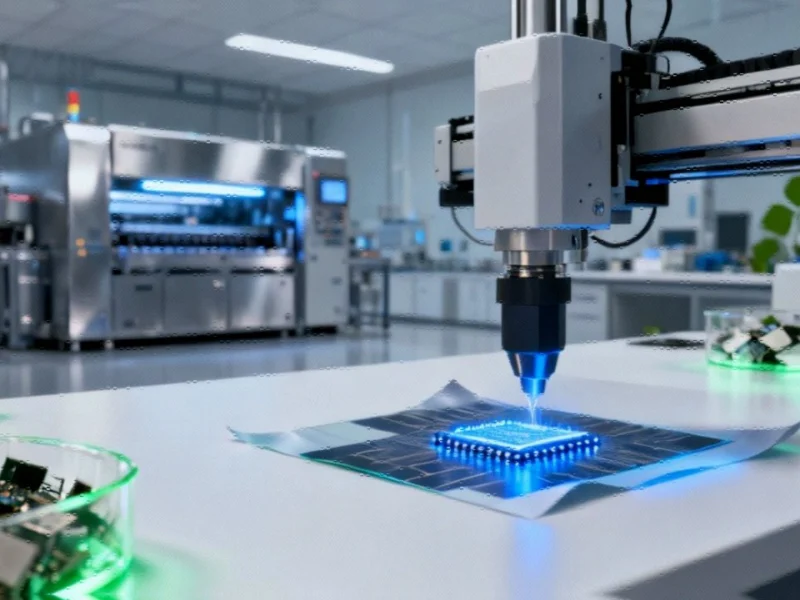Cosmic Revelation: Early Universe Was Heating Up
Astronomers have made a groundbreaking discovery about the universe’s early development, according to new research published in The Astrophysical Journal. Using a decade of data from the Murchison Widefield Array telescope in Western Australia, scientists have determined that the universe was heating up during a critical period about 800 million years after the Big Bang, challenging previous theories that suggested a “cold start” to cosmic reionization.
Table of Contents
Understanding the Universe’s Formative Years
The cosmic timeline following the Big Bang involved several crucial phases, sources indicate. After the initial explosion, the universe cooled and expanded for approximately 400,000 years until protons and electrons combined to form hydrogen atoms. This began what astronomers call the “cosmic dark age,” when the universe was filled with neutral hydrogen for about one billion years until the first stars and galaxies emerged., according to emerging trends
As the report states, when these primordial stars began emitting UV light, they stripped hydrogen atoms of their electrons, initiating the “Epoch of Reionization” and transforming the universe into the luminous cosmos we recognize today. However, the conditions during this transition have remained largely mysterious until now.
Contradicting the Cold Start Theory
According to the international research team, their findings directly challenge the “cold start” theory of reionization. “As the universe evolved, the gas between galaxies expands and cools, so we would expect it to be very, very cold,” lead author Cathryn Trott from Curtin University stated in a press release. “Our measurements show that it is at least heated by a certain amount. Not by a lot, but it tells us that very cold reionization is ruled out.”
The research team detected no evidence of the specific signal that would indicate a cold universe at this developmental stage, suggesting instead that heating was occurring. Analysts suggest this warming was likely driven by X-rays from early black holes and stellar remnants, though the definitive signal of this heating mechanism has yet to be identified.
Technical Breakthrough in Cosmic Archaeology
Glimpsing events from nearly 13 billion years ago required sophisticated technology and methodology. The Murchison Widefield Array telescope, operating at 70-300 MHz, was specifically designed to detect neutral hydrogen emissions from the reionization epoch. Even with this specialized equipment, researchers reportedly needed to perform extensive data subtraction to isolate the ancient signals from cosmic noise generated by nearby stars, galaxies, and Earth’s atmosphere.
The decade-long dataset proved crucial to the discovery, allowing scientists to make inferences by omission. Co-author Ridhima Nunhokee from Curtin University expressed confidence in future discoveries, stating, “The signal is definitely buried in there. It’s just improving on our data, and getting more data, cleaner data, to reach it.”
Implications for Cosmic Understanding
This research represents a significant step in understanding one of the most mysterious periods in cosmic history. By demonstrating that the universe was heating during this transitional phase, scientists can now refine their models of early cosmic evolution. The findings suggest that black holes and stellar remnants played a more active role in shaping the early universe than previously thought.
As the scientific community continues to analyze this data and collect more observations, researchers anticipate further revelations about the universe’s formative years. The ongoing research at the Murchison Widefield Array and other facilities worldwide continues to peel back layers of cosmic history, bringing us closer to understanding the full story of our universe’s development from its explosive beginnings to its current state.
Related Articles You May Find Interesting
- Meta Invests in Clean Iron Startup Electra Through Environmental Credit Purchase
- TierPoint Secures $240M Funding, Acquires Pennsylvania Data Center Campus for Ma
- UK Government Rebrands Digital ID as Time-Saving Tool Amid Public Opposition
- Pixel 10 May Mark Final Chapter for Privacy-Focused Android Mods
- AI-Generated Content Reaches New Milestone as Sora Evades Human Deepfake Detecti
References
- https://www.livescience.com/space/astronomy/astronomers-close-in-on-ancient-s…
- http://en.wikipedia.org/wiki/Reionization
- http://en.wikipedia.org/wiki/Big_Bang
- http://en.wikipedia.org/wiki/Universe
- http://en.wikipedia.org/wiki/Murchison_Widefield_Array
- http://en.wikipedia.org/wiki/Hydrogen
This article aggregates information from publicly available sources. All trademarks and copyrights belong to their respective owners.
Note: Featured image is for illustrative purposes only and does not represent any specific product, service, or entity mentioned in this article.



